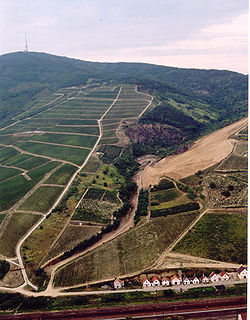| Wine region | |
 | |
| Country | Hungary, Slovakia |
|---|---|
| Total area | 11,149 ha[1] |
| Size of planted vineyards | 5,500 ha[1] |
| Grapes produced | Furmint, Hárslevelű, Yellow Muscat, Zéta, Kövérszőlő, Kabar[1] |
| Varietals produced | Tokaji[1] |
| Comments | |
| Official name | Tokaj Wine Region Historic Cultural Landscape |
| Location | Tokaj, Hungary |
| Includes | Ungvári, Rákóczi, Koporosi, Gomboshegyi and Oremus Cellars; Tolcsva Wine Museum Cellars |
| Criteria | Cultural: (iii), (v) |
| Reference | 1063 |
| Inscription | 2002 (26th Session) |
| Area | 13,255 ha (51.18 sq mi) |
| Buffer zone | 74,879 ha (289.11 sq mi) |
| Coordinates | 48°9′N 21°21′E / 48.150°N 21.350°E |

Tokaj wine region (Hungarian: Tokaji borvidék[2] Slovak: Vinohradnícka oblasť Tokaj[3]) or Tokaj-Hegyalja wine region (short Tokaj-Hegyalja or Hegyalja) is a historical wine region located in northeastern Hungary and southeastern Slovakia. It is also one of the seven larger wine regions of Hungary (Hungarian: Tokaji borrégió). Hegyalja means "foothills" in Hungarian, and this was the original name of the region.
The region consists of 28 named villages and 11,149 hectares of classified vineyards, of which an estimated 5,500 are currently planted. Tokaj is particularly famous as the origin of Tokaji aszú wine, the world's oldest botrytized wine. Because of its testimony to a long and unique tradition of viticulture and its cultural importance as a wine-making region, Tokaj was declared a World Heritage Site in 2002 under the name Tokaj Wine Region Historic Cultural Landscape.[1]
Due to the Treaty of Trianon, a smaller part of the historical wine region now belongs to Slovakia.
- ^ a b c d e "Tokaj wine region". House of Hungarian Wines. Archived from the original on 28 January 2013. Retrieved 28 December 2012.
- ^ "127/2009. (IX. 29.) FVM rendelet a szőlészeti és a borászati adatszolgáltatás, valamint a származási bizonyítványok kiadásának rendjéről, továbbá a borászati termékek előállításáról, forgalomba hozataláról és jelöléséről" (in Hungarian). Nemzeti Jogszabálytár. 16 December 2012. Retrieved 16 December 2012.
- ^ E-Bacchus - Register of designations of origin and geographical indications protected in the EU
